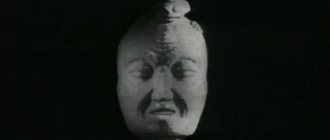Fear for one’s own life, the health of relatives and surrounding members of society is a completely normal phenomenon inherent in a person at the genetic level. Irrational fears are present in most people, however, unlike rational fears, they poison existence and lead to the development of serious mental problems.
Differences between normal fears and irrational fears and phobias
The concept of "phobia" comes from the Greek language, where the word "phobos" means "terror" or "fear". This term is usually understood as a fear that is uncontrollable and causes a person inconvenience in certain situations, repetitions of which he tries with all his might to avoid. A phobia is an unreasonable long-term fear that provokes permanent anxiety, inevitably leading to personality deformation.
Fear is a kind of signal that arises due to a stressful situation, emotional shock or loss, and informs a person about an imaginary or real danger. If fear becomes obsessive and neurotic in nature, it turns into a phobia. There are fears:
- rational;
- irrational.
In the first case, we are talking about fears inherent in a person at the genetic level. With their help, he can prevent danger or emerge victorious from difficult situations that require high concentration and composure. Such fears perform a useful function, since they protect against an animal bite or falling from a height. Real fear simplifies the process of adaptation of the subject to the conditions of the surrounding reality. For example, when a person stands on a balcony, leaning over the railing, such fear prevents him from falling and breaking, causing quite reasonable fears.
Feeling uneasy while in turbulence is considered a normal manifestation of fear, but refusing to attend an old friend's wedding due to a panicky fear of flying on airplanes is an unhealthy phobia. As an example of the negative impact of phobias on life, one can cite a person who was offered a prestigious, highly paid job, but he refuses it for fear of going up to the 11th floor every day.
Far-fetched (or irrational) fears arise in cases where real fears are deeply embedded in the subconscious. Their appearance has nothing to do with a real threat and signals a non-existent danger. Irrational fear is a false alarm that brings absolutely no benefit to a person, but has a negative effect on the psyche.
It is commonly believed that the feeling of anxiety originates in the amygdala. Here, associations between sources of panic and reactions to their occurrence are consolidated. In the event of a repeated collision with an object that poses a danger, the amygdala produces hormones that bring the body into a state of combat readiness. A person perceives it as uncomfortable due to increased blood pressure, the release of adrenaline and the appearance of sweat.
Ergophobia
This is a fear of work and being in a work environment. Anxiety disorder leads to alienation: the fear of leaving maternity leave or vacation, looking for a new place of work, or joining a team is very difficult for people.
The girl made a simple renovation that transformed the nursery: before and after photos
A week later, the wolf took off the sheep's clothing: how I found a groom in my old age
I took an unnecessary pallet and stones and made a cute outdoor recreation kit
Types and symptoms of phobias
Most children's fears tend to gradually fade away until they disappear completely by a certain age. For example, a child’s fear of the dark manifests itself in requests to adults to leave the light on at night. Such fears usually do not pose a serious threat. However, if they do not continue to disturb an adult, it is necessary to take measures to eradicate them.
The ICD recognizes the following categories of phobic disorders:
- Isolated (or specific) phobias, which are limited to specific situations and objects. These include fear of a certain type of animal or insect, claustrophobia (fear of enclosed spaces), fear of blood or fear of air travel.
- Social phobias interfere with career advancement, establishing normal relationships with colleagues and making new friends. A person suffering from social phobia experiences fear of talking on the phone or speaking in public.
Experts classify agoraphobia as a separate category, which is considered the opposite of claustrophobia. Fear of open space prevents you from leaving your comfort zone, such as the space of your own home, and also prevents full-fledged life activity, since the subject subject to it is terrified of ridicule and public censure for any more or less significant act.
The symptoms of phobias vary depending on the degree of anxiety and the depth of the emotional experience of fear. Among the main manifestations of phobias at the physiological level:
- increased sweating;
- tingling of the limbs;
- dizziness, nausea;
- a feeling of “compression” in the chest area;
- rapid heartbeat;
- sudden changes in body temperature.
On an emotional level, phobias can manifest as a feeling of imminent loss of consciousness, fear of going crazy or losing control of the body, dissociation and a difficult-to-control desire to escape to a secluded place where there is no reason to panic or worry. Well-established phobias lead to low self-esteem, depressive disorders, and can provoke schizophrenia.
Irrational fears can be explained using Pavlov's model, when negative stimuli are combined with neutral ones, and a person develops negative reactions to neutral stimuli. A striking example of this statement is the experiment conducted by the famous psychologist and founder of behaviorism John Watson. He decided to conduct research to obtain information about the occurrence of phobias in childhood, for which he had to resort to a very controversial and even cruel experiment.
The main character in this experiment was a nine-month-old boy who had no fear of white rats, since he had been interacting with them since the age of two months. During the experiment, the child was shown objects such as cotton wool, a Santa Claus mask, a white rabbit and a rat of similar colors for 60 days. After a thorough acquaintance with the items listed above, the boy was allowed to play with the rat, sitting him in the center of the room.
A few minutes after the rat and Albert (that was the name of the experimental boy) began playing, John picked up a metal hammer and hit it on an iron plate, causing a loud, repulsive sound to be heard throughout the room. Some time later, contact with the animal began to evoke negative emotions in the baby. 7 days later, before the rat was released into the room, a blow was heard on the iron plate, causing Albert to cry. After a few more days, it was possible to establish that the child was afraid not only of a rodent, but also of Santa Claus's beard, white rabbits and cotton wool.
This experiment made it possible to establish that irrational fears arise due to the transfer of real causes to accompanying stimuli. Phobias can also be acquired through the experiences of others. For example, a person who saw his relative or friend being bitten by a dog often begins to experience panic at the sight of animals, even during a regular walk in the park. For some people, it is enough to hear a picturesque story for the subject of the narrator’s fear to begin to cause neurosis and panic in them.
According to the theoretical basis of classical psychoanalysis, phobias arise from forbidden desires that a person cannot realize or accept due to condemnation from society. Desires are suppressed and perceived by the subject as an imaginary danger, the source of which is not inside him, but outside. The father of psychoanalysis, Sigmund Freud himself, was afraid of ferns, but he was never able to get to the root of this unusual phobia.
What is the basis of thanatophobia?
Marlene Dietrich once said: you need to have a wild imagination to be afraid of death. Patients do come up with many excuses for their disorder.
The main reason that makes people experience a pathological feeling of fear is the unknown. No one can tell what happens to a person after leaving for another world. This lack of awareness is scary. The stories of people who returned from the “other world” give people confidence in the existence of an afterlife, although this is devoid of scientific justification. Religious motives also lead people to believe that there is life after death.
When fantasizing, thanatophobe imagines unpleasant circumstances of the afterlife, which plunges him into horror. He begins to be catastrophically afraid of finding himself on his deathbed.
Of particular note is the religious fear of death, which is difficult to correct. Believing patients doubt whether they are living their lives with dignity, whether they will go to heaven after death, or whether they are destined for hellish torment. The fear of death among such thanatophobes is especially persistent and pronounced.
Another reason for fear is fear for loved ones. A person is afraid that there will be no one to take care of his relatives after his death. Typically, a similar situation occurs among parents with small children or among children with elderly parents. The patient may also be painfully afraid that one of his beloved relatives may pass on to another world.
A phobia can form if a person witnesses the death of a stranger or relative. The patient begins to devote a lot of time to thinking about death, asking questions about life and death. The departure of a loved one becomes a tragedy for a thanatophobe, leaving an imprint on the psyche, which may well transform into a phobia.
A special role belongs to the media, which feed people’s imagination with stories about death, often tragic and terrible. In addition, the media through films supports the idea of immortality. Suggestible individuals quickly pick up this myth. To which their consciousness reacts with fear that they may not achieve this immortality.
A prosperous life also provokes the development of thanatophobia. In this case, the patient is afraid, in the event of death, to lose all the benefits “kindly provided” by fate. It turns out that the fear of death is born not only in a gloomy environment, but also in a situation of complete abundance.
People who strive for total control over their own and other people’s lives, unfortunately, are deprived of the ability to control the coming of death. Naturally, the thought that there is something beyond their control is frightening.
Often a phobia overtakes a person who is terrified of being left alone on his deathbed. The thought that no one will share the last minutes of his life with him is frightening. Fear is especially relevant when the patient has loved ones with whom he is in a quarrel. Perhaps undeservedly offended by him. Thanatophobe fears that before leaving for another world he will not have time to ask for forgiveness from them.
The disorder may be a consequence of sadness about the passing of youth or a panicky reluctance to grow old. Indeed, in the human mind, death is more often associated with old age. Such a patient is terribly afraid of death, because, approaching old age, he loses vital energy.
Age is a special reason for the formation of a phobia. It can manifest itself both in childhood and in adulthood. The fact is that this is a time of age-related crises, when a person consciously begins to think about the meaning of life, rethinks his existence, looks back, assessing the path traveled. Thoughts about what has been done and what remains to be done begin to visit him. Philosophical thoughts suggest that life is not endless, and there is still so much to do.
If, in addition, a person is accompanied by depression against the background of an age crisis, then the appearance of various phobias is quite likely.
How to get rid of irrational fears?
To get rid of irrational fears, first of all, the desire of the person himself is necessary. In addition, a subject who decides to eliminate phobias that poison existence will be required to:
- ability for self-analysis;
- the beginnings of critical thinking;
- willingness to work on yourself.
Those who feel strong enough to overcome phobias should start with simple steps that will sooner or later lead to positive results. First, you need to admit to yourself that you have an unreasonable fear, after which you can move on to trying to relax in a moment of anxiety or impending panic. The following remedies can help in getting rid of an attack of fear:
- soothing music or sounds of nature;
- calm measured breathing;
- adopting a comfortable posture conducive to relaxation.
People who do not have the ability to independently work on eradicating phobias should seek help from specialists. Often, cognitive behavioral therapy is used to get rid of various phobias. With its help, you can overcome conscious and subconscious negative beliefs and attitudes that lead to panic attacks and other nervous disorders.
In psychotherapy, special medications are often used to combat phobias. The following groups of drugs are mainly used:
- Benzodiazepines. They have antixiolytic (anti-anxiety) and sedative effects.
- Beta blockers. They relieve negative psychosomatic symptoms and reduce the stimulating effect of adrenaline.
Pharmaceutical serotonin reuptake agents (SSRIs) are designed to regulate serotonin levels, a deficiency of which leads to depressed mood and panic attacks. To combat phobias, it is useful to have an understanding of techniques that allow you to achieve maximum relaxation. The principle of the “ladder of fear” is based on gradual, careful contact with the object that provoked the phobia. For example, a person who experiences panic at the sight of dogs should first observe the animals from afar. After a certain time, you can take careful steps to get closer to the dogs.
Irrational fears are disturbances that can be corrected with the help of humor. The ability to laugh at your own fears is an important tool in the task of getting rid of phobias. Exposure is a face-to-face encounter with an object that causes panic. This technique should be implemented under the supervision of a specialist. Desensitization is the process of working through situations that provoke the development of irrational fear.
The first reason. Educational defects - imaginary reality
The unconscious instinct of self-preservation is one of the genetic codes of the human species, which is formed, developed and reflected by parents in the process of growth and education of the child.
It is this learning that allows a child, and then an adult, to objectively assess the degree of threat and the level of danger of a situation for their own life and health, instantly choosing There is a model of behavior that is adequate to a dangerous situation, aimed at maintaining the well-being of one’s own life and health.
Deformations in the system of parental education (overprotection, education by fear, indifference, harshness or cruelty) lead to the formation and consolidation of false associations and deformed connections in the child. In response to a child’s simple action, the main person in the child’s life is the parent, who is called upon to develop the natural instinct of self-preservation in the process of teaching the child the correct response to real and imaginary threats; instead, when dissatisfied with some action of the child, he connects the child’s action in the shortest and simplest way with his death, from which instinct is called upon to save.
Taking into account the peculiarities of the mental development of children, their impressionability and unconditional faith in parents (significant adults), it is precisely such destructive attitudes that the child accepts as an unconditional, one and only truth, for example:
- the child talks while eating, the parent does not like it, and he stops the child, telling him: “don’t talk (shut up!) while eating, otherwise you will choke and die”;
- the child falls asleep for a long time, the parent is tired of sitting next to him, and he says to the child: “go to sleep already, if you don’t sleep, the wolf will come, take you into the forest and eat you”;
- the child refuses to take the medicine, the parent cannot force the child to take it and then tells the child: “if you don’t take the medicine, you will die.”
It should be added: often the parent (or significant adults) reinforces these intimidating attitudes with appropriate pantomime and vocal intonation, which enhance the effect of what they say.
As the child grows and matures, false associations and deformed connections are transformed into destructive, painful attitudes, integrated and appear in deformed behavioral patterns, becoming a real tragedy for an adult.
Under certain conditions, thanks to the inclusion of deformed associations and deformed attitudes in the work, the archaic unconscious instinct of self-preservation (it is better to be safe than to be under-insurable) changes the work of mental processes (increasing sensations , thinking and perception). The brain takes an imaginary danger for real, instantly changing the model of normal, long-term, calm and rhythmic work of the body to short-term and emergency work in ex emergency conditions, including protective physiological mechanisms that mobilize all systems of the body and prepare a person to perform serious muscular effort.
This causes unpleasant physiological symptoms, for example:
- trembling-tremor of the legs and arms (expresses readiness to run or to a possible fight, or to attack);
- numbness, pallor, faintness and shallow breathing or holding it (express readiness to freeze in order to look like a dead, tasteless person);
- slowing down of digestive processes (blood moves from the abdomen to large groups of major muscles that use it until the end of the critical situation) causes rumbling in the abdomen, urges to feel sick (then nausea) or the urge to defecate (defecate) with corresponding odors (much like a skunk does) .
The last two positions, according to the ancient and wise brain, make its human owner a disgusting, tasteless and spoiled product for a potential dinosaur dinner, and it is easier to escape from danger “empty.”
Effective techniques for getting rid of irrational fears
It is believed that irrational fears are activated in the right hemisphere of the brain. Therefore, you can restore mental balance with the help of the left hemisphere, which is responsible for rationalism and logical thinking. Specialists who practice rational therapy, in case of panic, give the following recommendations:
- Identify the object causing panic. It is necessary to turn off emotions and, from a logical point of view, think about how real a danger he poses.
- Distract attention from the object that provokes fear. In the case of active mental or physical activity, the brain stops concentrating on the source of fear.
- If you behave as if the object does not cause fear, your emotional and physical state will automatically stabilize.
The specialist must identify the real fear behind the irrational one and eradicate it using an effective technique, selected on an individual basis. Often real fears are rooted in deep childhood and are not stored in memory. In such cases, the help of a hypnotist is needed, who will be able to bring them to the surface for competent elaboration, followed by getting rid of phobias.
One of the successful specialists in the field of psychology and hypnosis is Nikita Valerievich Baturin. It helps people get rid of panic attacks, fears and other psychosomatics. We recommend watching the audio trance “From Panic Attacks and Fears”:
Decidophobia
This psychological disorder refers to the fear of making serious decisions. This type of phobia is a consequence of the suppression of the emotional-volitional sphere of the child, as a result of which an infantile personality grows out of him. Decidophobes are not averse to using the services of fortune tellers and psychics; they are highly influenced by fashion trends, church teachings, and political parties.
Let me buy a private island: how very rich people will relax this summer
Sons outdid their fathers in beauty: famous men and their children (photo)
Discover the last few "naturally quiet" places on the planet











